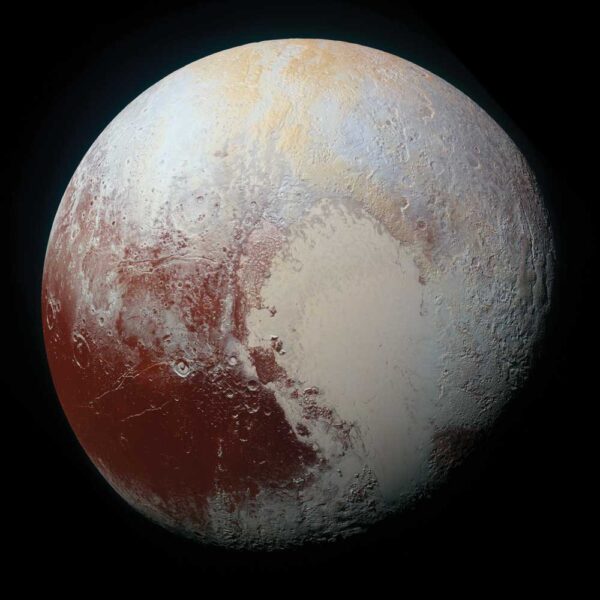Planetary exploration can take up a large portion of one’s life.

NASA / JHUAPL / SwRI
Exploring the solar system is a long game, with travel times measured in years. And the time from when we first propose a mission to when our spacecraft sits on the launch pad, ready to leave Earth or die trying, is often much longer still. In a way, the pace is a return to that of the age of sailing ships, when explorers left home for years at a time — though we modern planetary explorers don’t physically risk our lives, just large chunks of our careers.
The Voyager program, originally called the Grand Tour and first proposed in 1969, finally launched in 1977. Between 1979 and 1989, the two Voyagers visited Jupiter, Saturn, Uranus, and Neptune, in brief flybys lasting just a few days each. In between were long years traveling the interplanetary void. The frenzied Voyager encounters every few years at NASA’s Jet Propulsion Laboratory felt like family reunions, with people having visibly aged, some with newborn children in tow — and, sadly, some old friends no longer with us.
I grew up with the Voyagers, which launched the year I graduated from high school. I was fortunate to be involved as an undergraduate assistant for the Jupiter flyby in 1979, as a grad student for the Uranus pass in 1986, and working as a post-doctoral researcher when Voyager 2 had its final planetary encounter, with Neptune in 1989. That was a bittersweet moment: Twenty years after the Grand Tour was proposed, Voyager’s planetary visits were over.
But that same year, a band of young explorers gathered to plan a mission to Pluto. After years of rejections and setbacks, New Horizons finally launched in 2006 and nine years later reached the dwarf planet and its system of moons (S&T: Nov. 2015, p. 18). Many of the scientists from the initial 1989 effort, while no longer so young, were involved in that 2015 triumph.
I was pondering these time scales recently at a meeting about the thrilling Venus missions now in the works (S&T: May 2022, p. 12). It was wonderful to see many students and early-career scientists excited about the decade ahead. Yet I was also suddenly acutely aware of making the transition from “mid-career scientist” to “senior scientist.” The DAVINCI mission I’m involved in will, if all goes to plan, launch when I’m in my late 60s and return its data when I’m in my early 70s.
We have been trying to get these missions flown for decades. It’s incredibly satisfying to now be working on a funded mission, seeing plans materialize into agents of our curiosity that will seek answers to questions we first asked when fresh out of school. Some of us joked that, after all these decades, it will be these young whippersnappers in charge when we arrive at Venus.
Sometimes my non-planetologist friends, when I tell them that what I’m working on won’t bear fruit until the early 2030s, give me looks of pity. Sure, it takes patience and resilience, and there’s no guarantee of success. But there’s something cool about knowing that, if you stay healthy, in your later years you might make yourself useful. Overall, the feeling is one of gratitude — to be part of something big that will continue after you’re gone, and, in the meantime, to be here for part of the ride on this long, slow adventure through the solar system.
This article originally appeared in print in the September 2023 issue of Sky & Telescope. Subscribe to Sky & Telescope.
 1
1









Comments
Sandy82579
June 15, 2023 at 10:54 am
Pluto is a PLANET. Dan Brown and a small part of the IAU pulled a fast one.
You must be logged in to post a comment.
You must be logged in to post a comment.